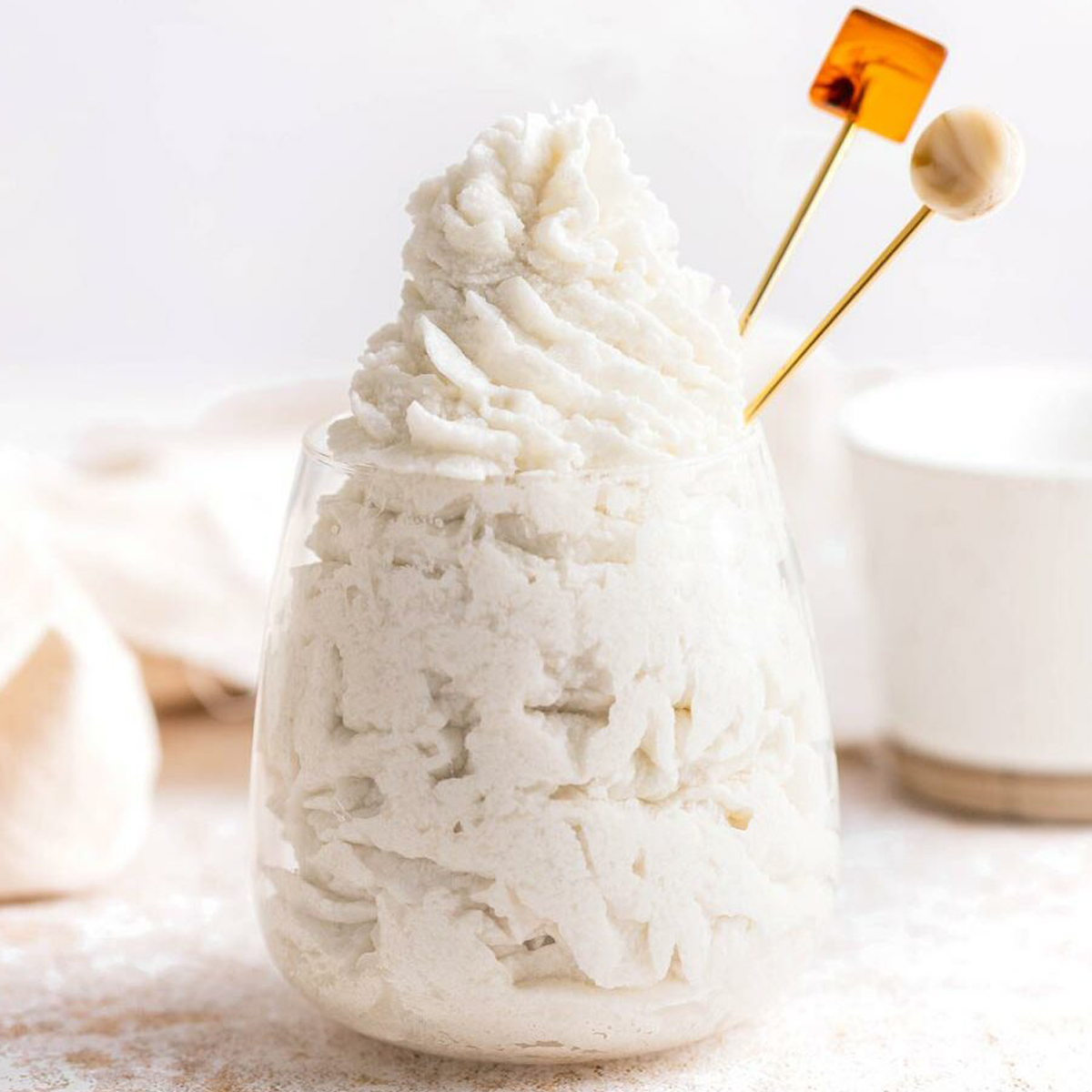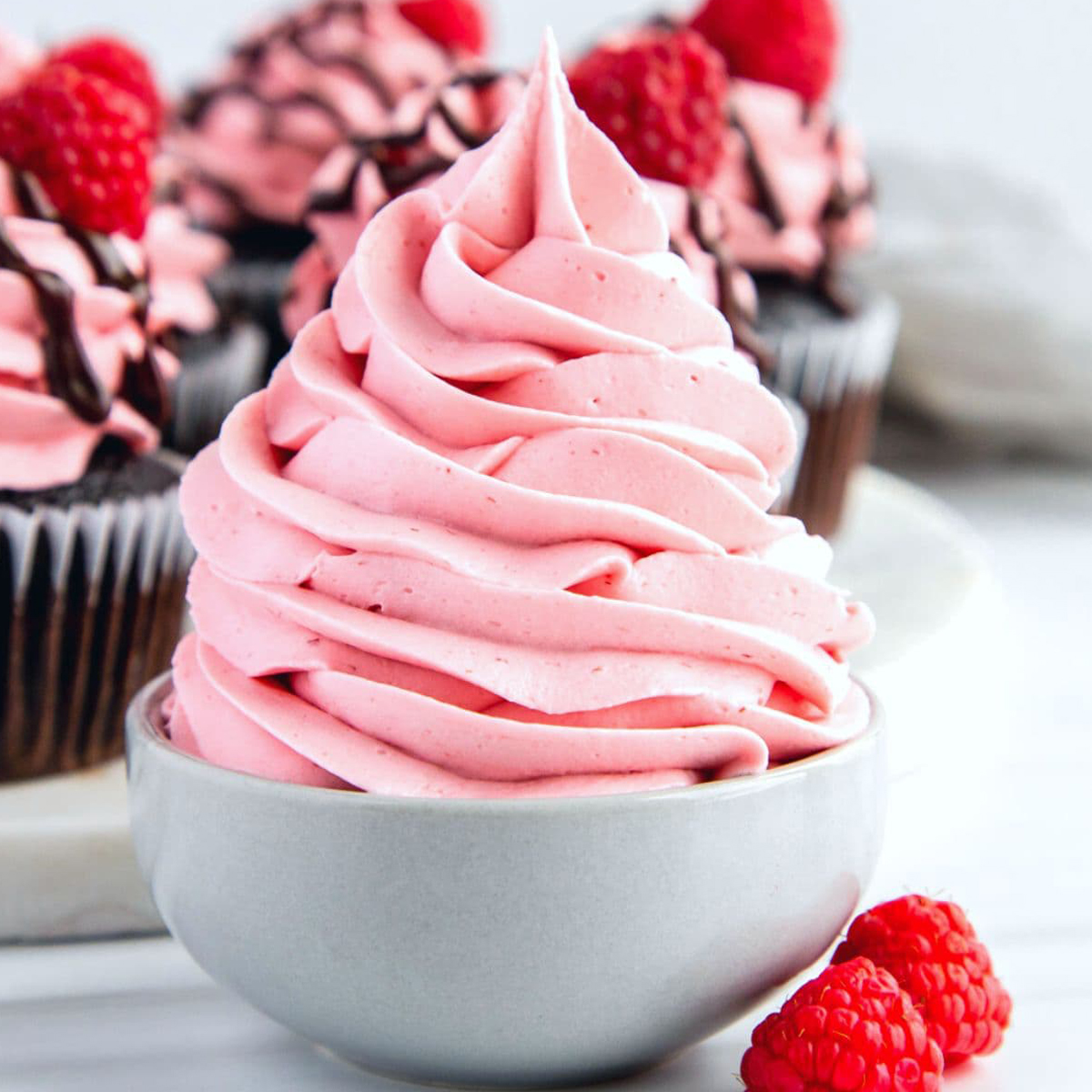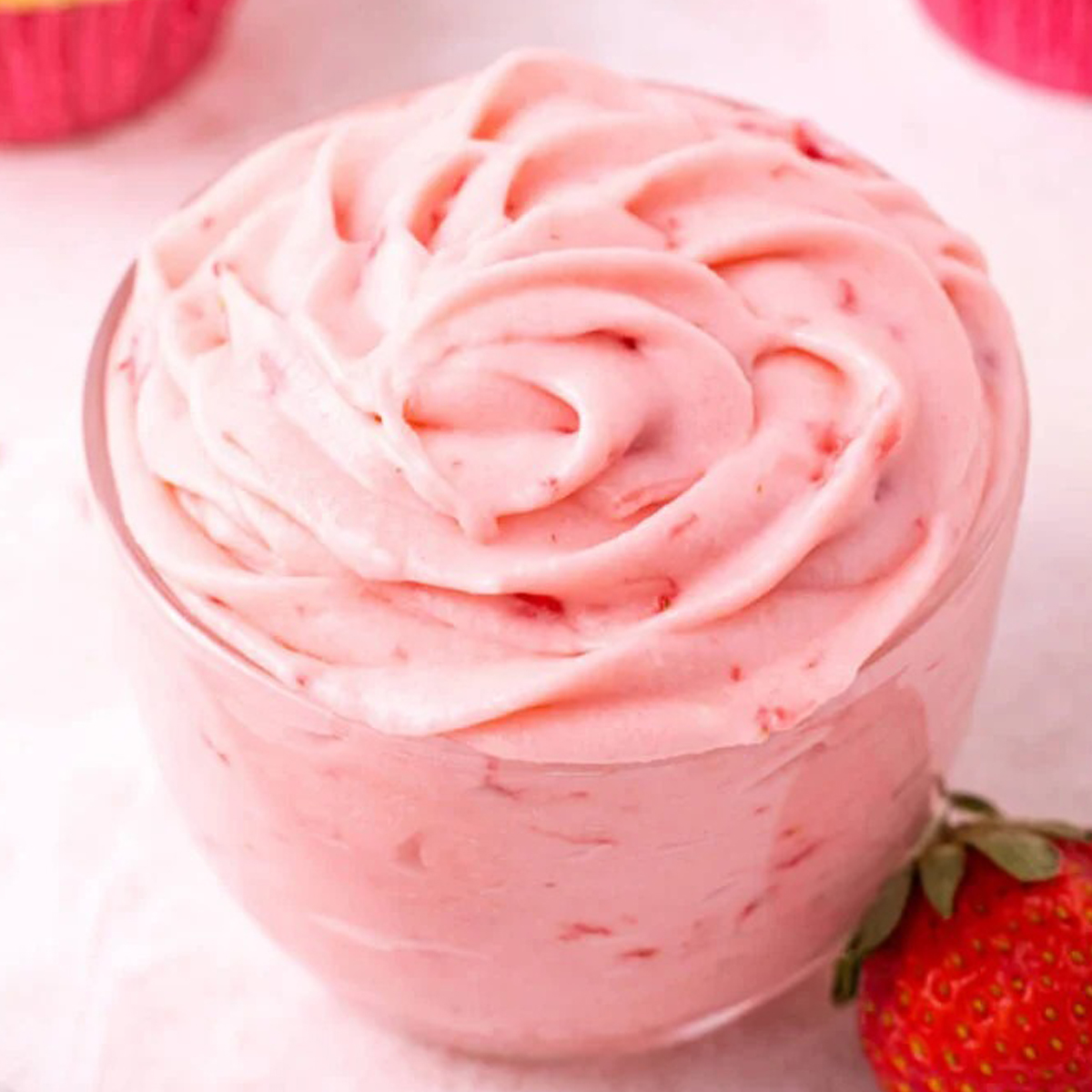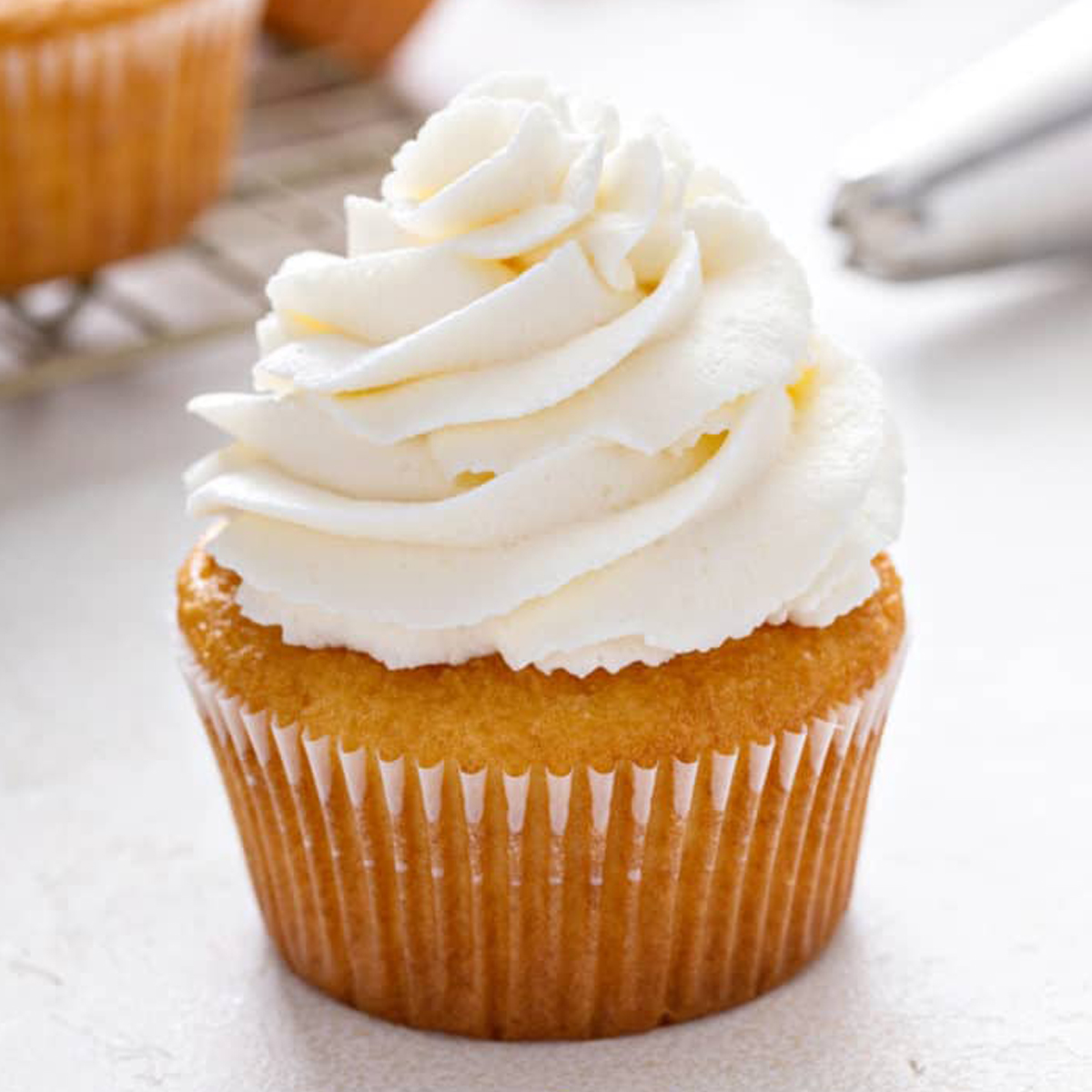Introducing the Coconut Cream Frosting, a tropical delight that adds a touch of exotic sweetness to your favorite baked treats. This luscious frosting is a celebration of the rich, creamy texture of coconut combined with a hint of natural sweetness. With its velvety smoothness and subtle coconut flavor, this frosting takes your desserts to new heights. Whether adorning a cake, cupcakes, or cookies, Coconut Cream Frosting transports your taste buds to a tranquil island oasis, making every bite an escape into tropical paradise.
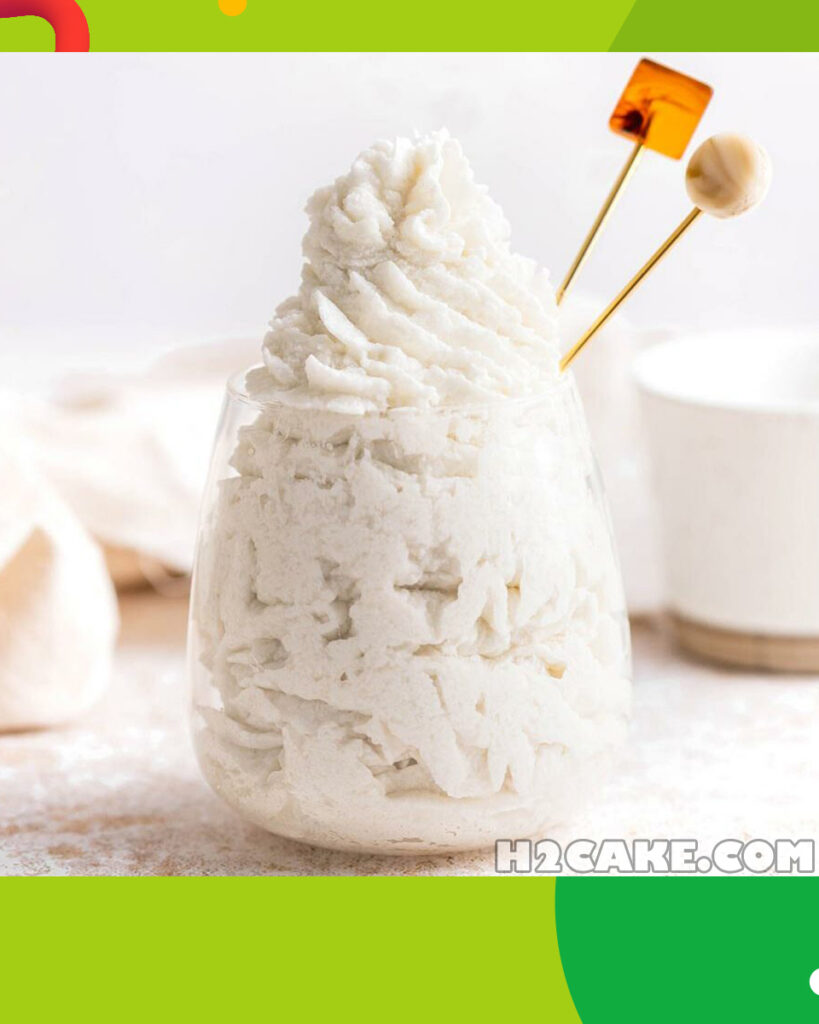
What is Coconut Cream Frosting?
Coconut Cream Frosting is a delectable dessert topping made from the creamy richness of coconut cream or coconut milk, along with other ingredients to enhance its flavor and texture. It offers a delightful tropical twist to your baked goods and desserts. The frosting’s main ingredient, coconut cream, provides a smooth, velvety texture and a subtle, natural coconut flavor that pairs wonderfully with a variety of treats.
Ingredients:
- Coconut Cream or Coconut Milk: The primary component of the frosting, coconut cream or coconut milk, adds the characteristic coconut flavor and creaminess.
- Powdered Sugar: To sweeten and stabilize the frosting.
- Vanilla Extract: For flavor enhancement.
- Butter or Margarine: This adds richness and a smoother consistency to the frosting.
- Optional Flavorings: Depending on the recipe, you might find additions like coconut extract, lime zest, or even a touch of rum to enhance the coconut flavor.
Preparation:
- Start by chilling a can of coconut cream or coconut milk in the refrigerator overnight. This allows the cream to separate from the liquid.
- Scoop out the solidified coconut cream from the can. Discard the liquid or save it for other uses.
- In a mixing bowl, beat the chilled coconut cream, softened butter or margarine, powdered sugar, and vanilla extract until smooth and creamy.
- If desired, add any optional flavorings for a customized taste.
- Once the frosting is ready, it can be spread onto cakes, cupcakes, cookies, or other desserts.
Usage: Coconut Cream Frosting can be used to frost and decorate various desserts, including:
- Cakes: It’s a delightful choice for coconut-flavored cakes or paired with flavors like chocolate or pineapple.
- Cupcakes: Transform ordinary cupcakes into tropical delights with a dollop of coconut cream frosting.
- Cookies: Spread a thin layer between two cookies to create delicious sandwich cookies.
- Pastries: Use it to fill pastries or cream puffs for a unique twist.
- Pies: Top pies, tarts, or bars with a layer of this frosting for added flavor and appeal.
Variations: Coconut Cream Frosting can be adapted to suit different tastes. You can adjust the sweetness level, incorporate different flavor extracts, or even add a touch of food coloring to enhance the visual presentation.
In summary, Coconut Cream Frosting is a luxurious and flavorful topping that infuses your desserts with the tropical essence of coconut. Its smooth texture and delicate flavor make it a favorite among those who appreciate the unique taste of coconut in their sweets.
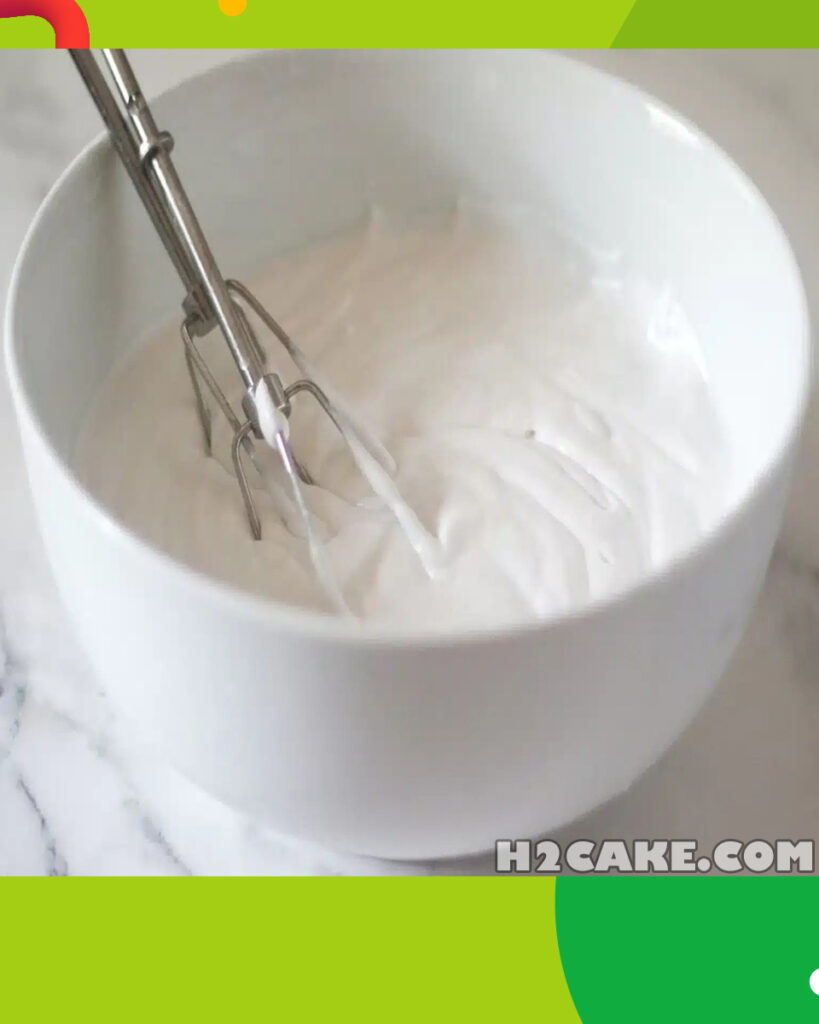
Why you will love Coconut Cream Frosting?
Coconut Cream Frosting offers a myriad of reasons to fall in love with its delightful qualities. Here’s why you’ll adore this luscious frosting:
1. Tropical Escape: Indulge in a taste of the tropics with every bite. The gentle coconut flavor instantly transports your senses to a serene island paradise.
2. Creamy Luxuriousness: The velvety texture of Coconut Cream Frosting feels incredibly luxurious on the palate, enhancing the overall enjoyment of your desserts.
3. Natural Sweetness: The frosting’s subtle sweetness comes from powdered sugar, allowing the coconut’s natural flavors to shine through without overwhelming your taste buds.
4. Versatile Pairing: Whether layered on cakes, swirled on cupcakes, or spread on cookies, this frosting pairs harmoniously with a variety of dessert bases.
5. Flavorful Simplicity: Coconut Cream Frosting showcases the essence of coconut in a simple and elegant manner, adding a layer of sophistication to your treats.
6. Customizable: Experiment with different extracts, such as coconut extract or a touch of rum, to create variations that suit your taste preferences.
7. Visual Appeal: The frosting’s off-white color adds an elegant touch to your desserts, while optional coconut shavings or toasted coconut flakes can enhance the visual appeal.
8. Joyful Nostalgia: The subtle coconut aroma and flavor might evoke memories of tropical vacations, summer picnics, or cozy moments by the beach.
9. Complements Diverse Flavors: While it’s a natural fit for coconut-flavored desserts, Coconut Cream Frosting also complements other flavors like chocolate, vanilla, or fruit.
10. Simple to Make: With just a few basic ingredients and minimal effort, you can whip up a batch of Coconut Cream Frosting to elevate your homemade treats.
11. Crowd-Pleasing: The exotic touch of coconut is both familiar and exciting, making this frosting a hit among a wide range of taste preferences.
12. Wholesome Indulgence: Coconut cream or coconut milk brings a touch of wholesome indulgence to your desserts, adding a unique nutritional profile.

Coconut Cream Frosting Recipe
Ingredients
- 1 can (13.5 oz) coconut cream or full-fat coconut milk, chilled overnight
- 1/2 cup (1 stick) unsalted butter, softened
- 3-4 cups powdered sugar, sifted
- 1 teaspoon vanilla extract
- Optional: 1/2 teaspoon coconut extract or 1-2 tablespoons rum (for flavor enhancement)
- Optional: Toasted coconut flakes or shavings for decoration
Instructions
- Chill the Coconut Cream: Place the can of coconut cream or coconut milk in the refrigerator overnight. This will allow the cream to separate from the liquid.
- Prepare the Ingredients: Ensure that your butter is softened at room temperature. Sift the powdered sugar to remove any lumps.
- Separate the Coconut Cream: Carefully open the chilled can of coconut cream or milk without shaking it. Scoop out the solidified coconut cream from the top of the can. Reserve the liquid for other uses, such as smoothies.
- Whip the Coconut Cream: In a mixing bowl, beat the chilled coconut cream with a mixer until smooth and creamy. This will take a few minutes.
- Add Butter and Vanilla: Add the softened butter to the whipped coconut cream. Continue to beat until the butter is fully incorporated and the mixture is smooth.
- Gradually Add Powdered Sugar: Start by adding 3 cups of sifted powdered sugar, one cup at a time. Beat on low speed after each addition until combined.
- Adjust Consistency and Flavor: Depending on your desired sweetness and consistency, add more powdered sugar as needed. If desired, add vanilla extract and any optional flavorings, such as coconut extract or rum. Beat until well combined.
- Beat Until Fluffy: Increase the mixer speed to medium-high and beat the frosting for 2-3 minutes until it becomes light and fluffy.
- Test and Adjust: Taste the frosting and adjust the sweetness and flavor if necessary. If it’s too sweet, you can balance it by adding a small pinch of salt.
- Decoration (Optional): If using, decorate your desserts with toasted coconut flakes or shavings for an extra touch of visual appeal.
- Frost Your Desserts: Spread or pipe the Coconut Cream Frosting onto your cakes, cupcakes, cookies, or other desserts.
- Serve and Enjoy: Once frosted, your desserts are ready to be enjoyed! Store any leftover frosting in an airtight container in the refrigerator.
This detailed formula guides you through the steps to create a creamy and delightful Coconut Cream Frosting that’s perfect for adding a tropical twist to your favorite treats. Adjust the quantities and flavorings according to your taste preferences.

How to serve
Serving Coconut Cream Frosting is a delightful experience that adds a tropical touch to your desserts. Here’s how to serve it:
- Frosted Desserts: Coconut Cream Frosting is typically used to frost and decorate various desserts, such as cakes, cupcakes, cookies, and bars.
- Smooth and Even: When applying the frosting, aim for a smooth and even layer. You can use a spatula, piping bag, or an offset spatula for this purpose.
- Layer Cakes: For layer cakes, spread a generous amount of Coconut Cream Frosting between the cake layers, creating a delicious filling that complements the cake’s flavor.
- Cupcakes: Swirl or pipe the frosting onto cupcakes in a decorative pattern. A simple swirl adds elegance, while more intricate designs can be created for special occasions.
- Cookies: Sandwich two cookies together with a dollop of Coconut Cream Frosting in the middle, creating cookie sandwiches that combine different textures and flavors.
- Bars and Brownies: Spread the frosting over cooled bars or brownies to add a layer of sweetness and creaminess.
- Decoration: If desired, you can sprinkle toasted coconut flakes, shredded coconut, or even edible flowers on top of the frosting for added visual appeal.
- Presentation: Place the frosted desserts on a serving platter or individual dessert plates for an attractive presentation.
- Accompaniments: Consider serving Coconut Cream Frosting-topped desserts with a side of fresh fruit, a drizzle of caramel or chocolate sauce, or a scoop of ice cream for a well-rounded dessert experience.
- Serving Utensils: Provide dessert forks, spoons, or cake servers for easy and elegant enjoyment.
- Temperature: Serve the desserts at a slightly cool or room temperature. Coconut Cream Frosting can become a bit firmer when chilled, so allowing it to warm up slightly enhances its creaminess.
- Enjoy: Encourage your guests to savor each bite, experiencing the delightful combination of coconut’s natural sweetness and the frosting’s creamy texture.
Coconut Cream Frosting brings a touch of the tropics to your desserts, making them even more irresistible and memorable. Whether you’re celebrating a special occasion or simply treating yourself to a delightful treat, serving desserts adorned with this frosting is sure to be a crowd-pleasing experience.
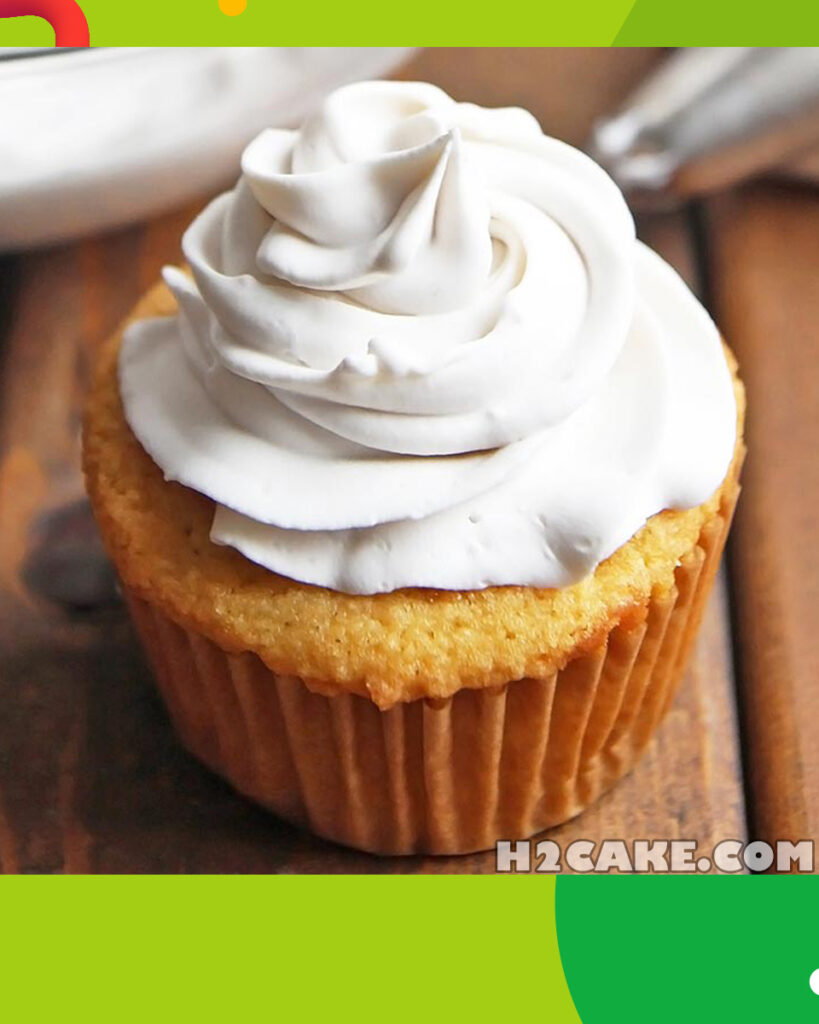
How to store
Properly storing Coconut Cream Frosting is important to maintain its texture and freshness. Here’s how to store it:
Short-Term Storage:
If you plan to use the frosting within a day or two:
- Airtight Container: Transfer any leftover Coconut Cream Frosting to an airtight container.
- Refrigeration: Store the container in the refrigerator. The cooler temperature helps keep the frosting from softening too much.
- Layer of Plastic Wrap: To prevent a skin from forming on the surface of the frosting, press a piece of plastic wrap directly onto the surface before sealing the container.
- Texture Check: Before using the frosting again, check its texture. If it has become too firm in the refrigerator, allow it to come to room temperature for a short while and then give it a gentle stir to restore its creamy consistency.
Long-Term Storage:
If you need to store the frosting for a longer period:
- Freezing: Coconut Cream Frosting can be frozen, but it’s best to freeze it separately from baked goods. Transfer the frosting to an airtight container, leaving some space at the top for expansion.
- Labeling: Clearly label the container with the contents and the date so you can keep track of its freshness.
- Thawing: When you’re ready to use the frozen frosting, transfer it to the refrigerator to thaw slowly. As it thaws, its texture might change, so give it a good stir before using.
Usage After Storage:
- Bringing to Room Temperature: Whether stored in the refrigerator or freezer, allow the frosting to come to room temperature before using. This will help it regain its creamy consistency.
- Stirring: After storing, the texture of the frosting might have changed. Give it a gentle stir to bring back its smoothness before using it to frost your desserts.
- Adjusting Consistency: If the frosting seems too thick after storage, you can add a small amount of coconut milk (a teaspoon at a time) and gently mix until you achieve the desired consistency.
Remember that the texture of Coconut Cream Frosting can be influenced by refrigeration and freezing. While it might not be as perfectly smooth as freshly made frosting, proper storage and gentle adjustments can help you maintain its creamy quality.
If You Love This Recipe Try These Out!
- Dreamy Lemon Cream Frosting
- Enchanting Raspberry Cream Frosting
- Captivating Tastes Of Strawberry Cream Frosting
- Unveiling The Artistry Of Chocolate Cream Frosting
- The Art Of Whipped Cream Frosting
Tips to make perfect Coconut Cream Frosting
Creating the perfect Coconut Cream Frosting requires attention to detail and careful execution. Here are some tips to help you achieve the best results:
1. Choose Quality Ingredients: Select high-quality coconut cream or coconut milk, preferably without added thickeners or stabilizers. Fresh, unsweetened coconut cream will provide the best flavor.
2. Chill the Coconut Cream or Milk: Refrigerate the can of coconut cream or milk overnight. This allows the cream to separate from the liquid, making it easier to scoop out the solidified cream for the frosting.
3. Use Softened Butter: Ensure your butter is softened to room temperature before adding it to the frosting. Softened butter blends more easily and results in a smoother texture.
4. Gradually Add Powdered Sugar: Add powdered sugar in increments, beating well after each addition. This prevents lumps and ensures even incorporation.
5. Mix Until Smooth and Fluffy: Beat the coconut cream, butter, and sugar until the mixture is smooth, creamy, and fluffy. This might take a few minutes, but it’s crucial for achieving the desired texture.
6. Adjust Consistency: If the frosting is too thick, add a small amount of coconut milk (a teaspoon at a time) and mix until you achieve the desired consistency. Be cautious not to add too much liquid, as it can make the frosting too runny.
7. Optional Flavor Enhancements: Consider adding a touch of vanilla extract, coconut extract, or a hint of rum to enhance the coconut flavor. Start with a small amount and adjust to taste.
8. Avoid Overbeating: While it’s important to achieve a smooth texture, avoid overbeating the frosting, as this can cause the fats to separate and create a grainy consistency.
9. Store Properly: Transfer any leftover frosting to an airtight container and store it in the refrigerator. Use plastic wrap pressed directly onto the surface of the frosting to prevent a skin from forming.
10. Bring to Room Temperature: Before using the frosting, allow it to come to room temperature. Cold frosting can be too firm to spread easily.
11. Gently Stir: If the frosting’s texture changes after storage, gently stir it to restore its smoothness. Avoid aggressive mixing, as this can introduce air and affect the texture.
12. Frost Cooled Desserts: Always apply Coconut Cream Frosting to fully cooled desserts. Warm desserts can cause the frosting to melt and lose its shape.
13. Decorate Thoughtfully: Decorate your desserts with finesse. Use piping bags, spatulas, or offset spatulas to achieve smooth and even layers of frosting.
14. Experiment with Texture: For a rustic appearance, you can leave some coconut shavings or flakes in the frosting for added texture and visual appeal.
15. Taste Test: Don’t forget to taste your frosting as you go. Adjust sweetness and flavor according to your preferences.
With these tips in mind, you’ll be well-equipped to create a perfect Coconut Cream Frosting that’s velvety, flavorful, and a delightful addition to your baked goods and desserts.
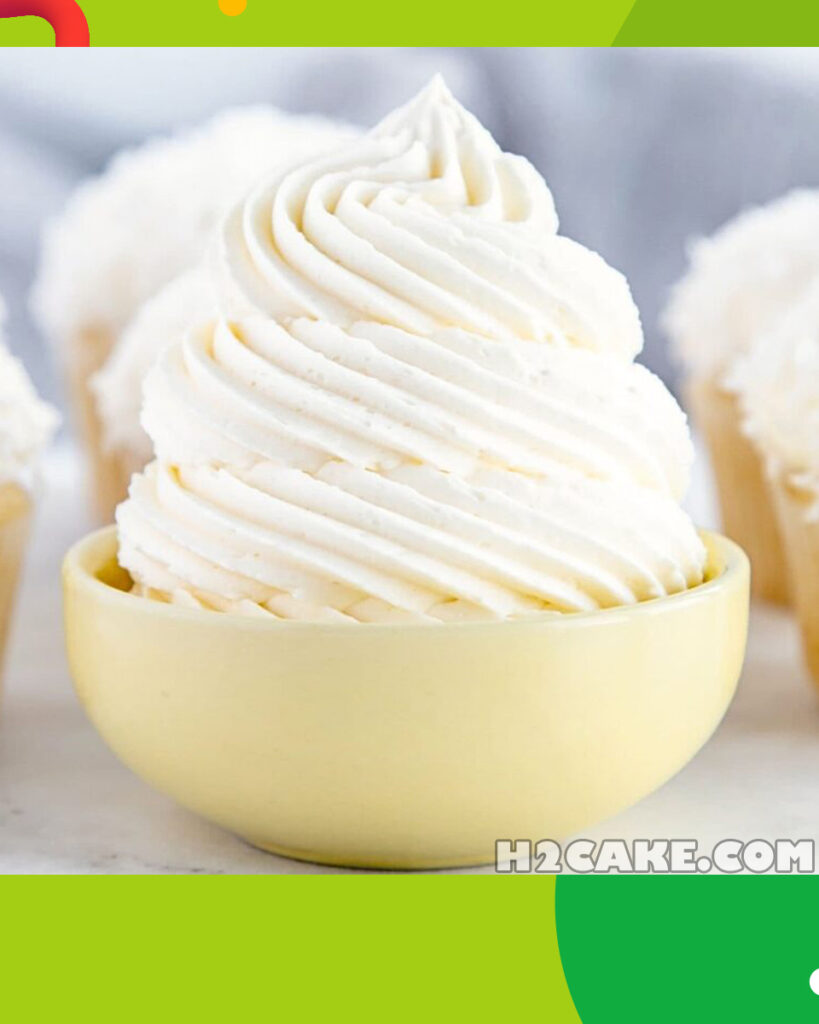
FAQ’s
Q: Can I use coconut milk instead of coconut cream? A: Coconut cream is thicker and richer than coconut milk. If using coconut milk, make sure it’s full-fat and has been chilled. After refrigeration, scoop out the solidified cream from the top of the can for the frosting.
Q: My frosting is too runny. What should I do? A: If the frosting is too runny, it might need more powdered sugar to thicken it. Gradually add more sifted powdered sugar, beating well after each addition until you achieve the desired consistency.
Q: My frosting is too thick. How can I fix it? A: If the frosting is too thick, you can add a small amount of coconut milk (a teaspoon at a time) and gently mix until it reaches the desired consistency. Be cautious not to add too much liquid, as it can make the frosting too thin.
Q: My frosting has turned grainy. What went wrong? A: Overbeating the frosting can cause the fats to separate and result in a grainy texture. Avoid overmixing the frosting once it’s smooth and creamy.
Q: Can I add food coloring to the frosting? A: Yes, you can add a drop or two of food coloring to achieve the desired tint. Gel or paste food coloring is preferable as it won’t affect the consistency as much as liquid coloring.
Q: How can I enhance the coconut flavor? A: You can enhance the coconut flavor by adding a small amount of coconut extract or using toasted coconut flakes in the frosting. Start with a small quantity and adjust to your taste.
Q: Can I make the frosting in advance? A: Yes, you can make the frosting in advance and store it in an airtight container in the refrigerator. Allow it to come to room temperature and give it a gentle stir before using.
Q: Can I freeze Coconut Cream Frosting? A: Freezing frosting can affect its texture, as dairy-based frostings might not freeze and thaw well. If you need to freeze it, do so with caution and be prepared for potential texture changes.
Q: Why does my frosting have a lumpy texture? A: Lumps in the frosting can occur if the butter isn’t fully softened or if the powdered sugar isn’t sifted before adding. Use softened butter and sift the powdered sugar to prevent lumps.
Q: Can I use sweetened shredded coconut in the frosting? A: While you can add sweetened shredded coconut for texture, be mindful that it might affect the sweetness of the frosting. Adjust the amount of powdered sugar accordingly.
Q: Can I use Coconut Cream Frosting for piping? A: Yes, Coconut Cream Frosting can be piped, but its consistency might require a stiffer version for intricate piping designs. Adding more powdered sugar can help achieve the desired piping consistency.
Remember that Coconut Cream Frosting can be versatile but might require some adjustments based on your preferences and the specific conditions in your kitchen. Troubleshoot and adapt as needed to achieve the best results.
Nutrition information
Please note that specific nutritional information can vary based on ingredient brands, quantities, and preparation methods. Below is a general estimate for the nutrition information for Coconut Cream Frosting (per 2-tablespoon serving):
- Serving Size: 2 tablespoons
Nutritional Values (Approximate):
- Calories: ~100-120
- Total Fat: ~8-10g
- Saturated Fat: ~6-8g
- Cholesterol: ~10-15mg
- Sodium: ~5-10mg
- Carbohydrates: ~8-10g
- Sugars: ~7-9g
- Protein: ~0-1g
Coconut Cream Frosting is naturally rich due to the coconut cream and butter content. It’s important to enjoy it in moderation as a delightful and indulgent addition to your desserts. If you have specific dietary requirements or health concerns, consider adjusting the ingredients or portion sizes accordingly.

